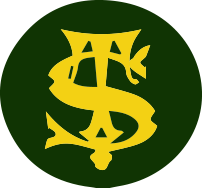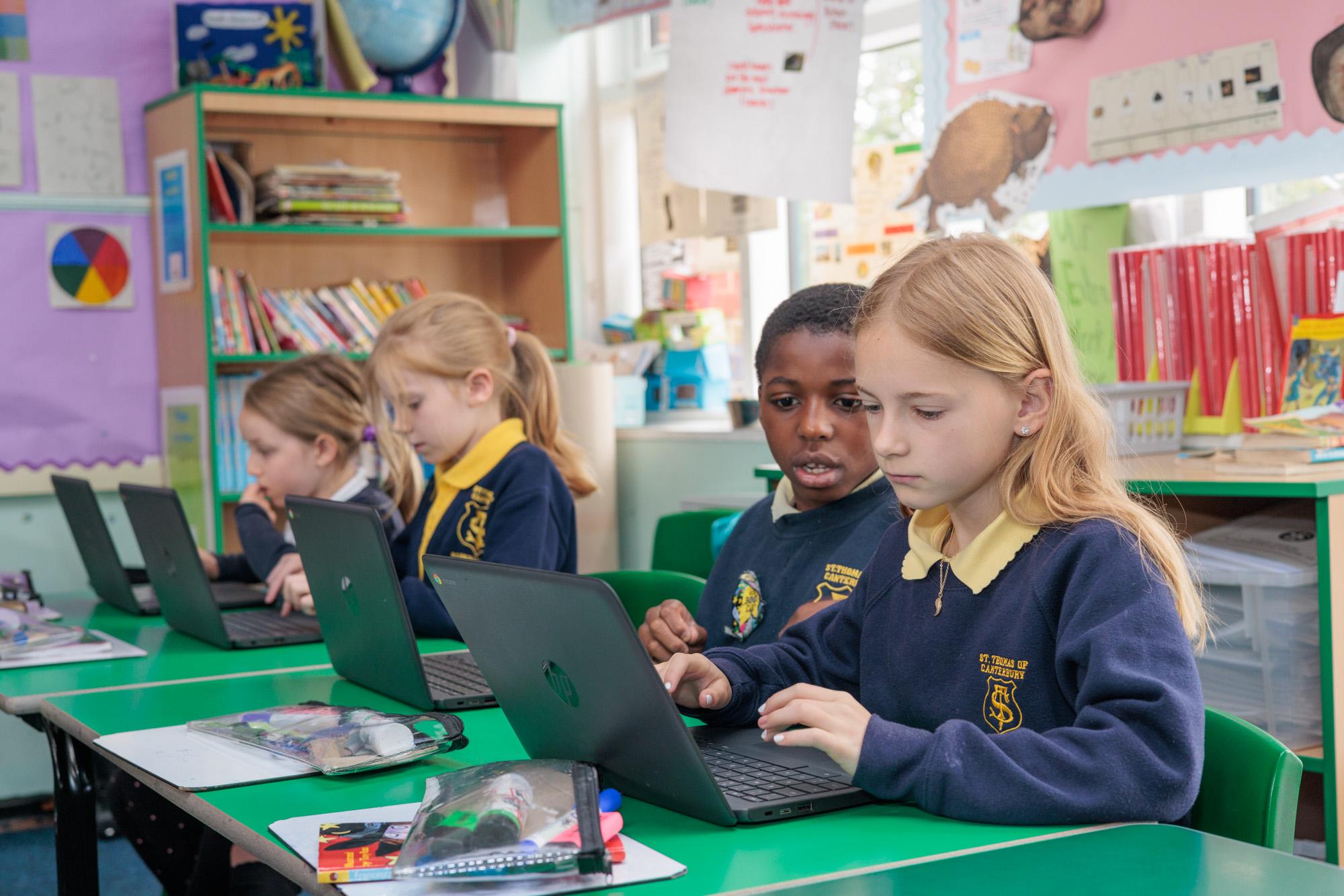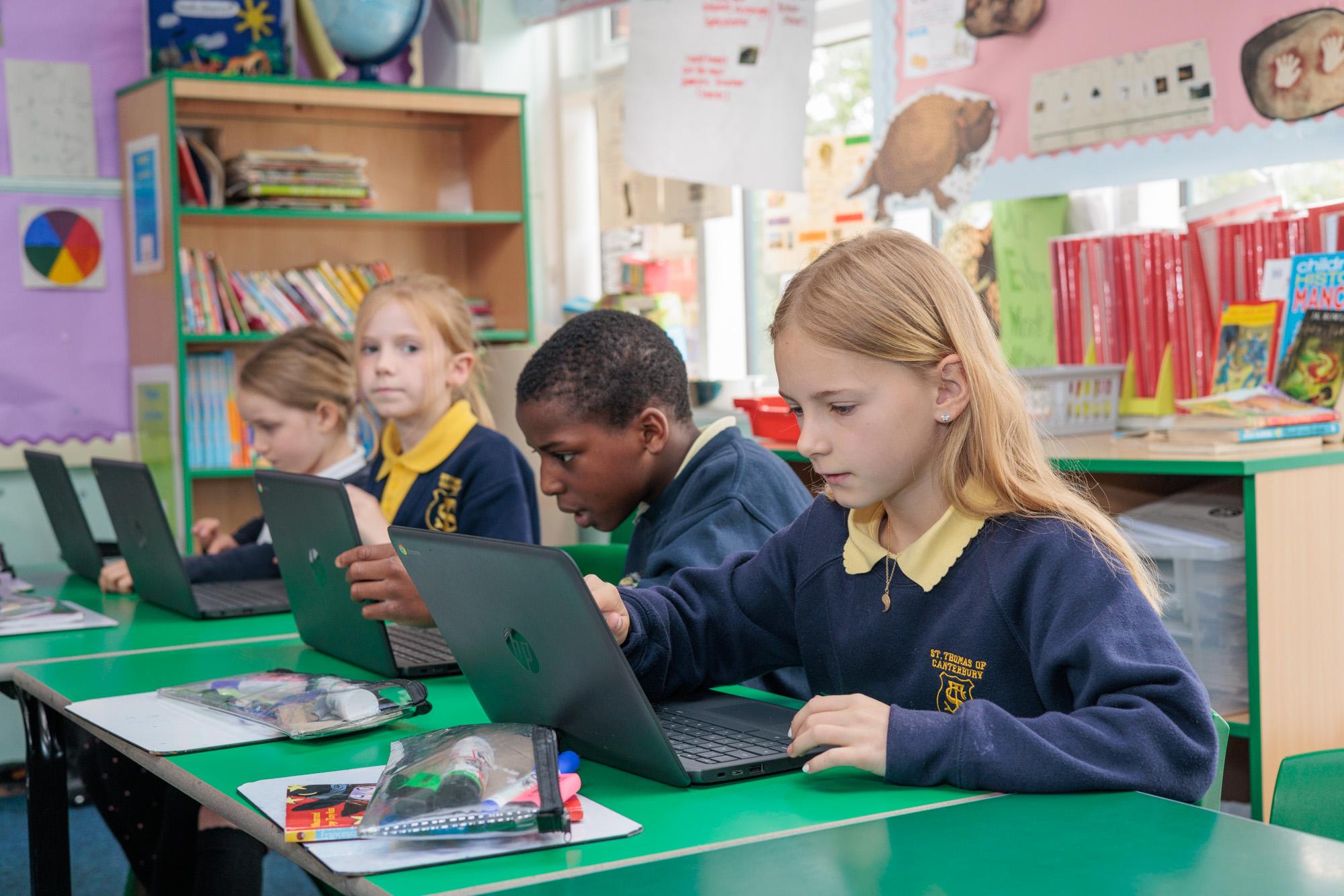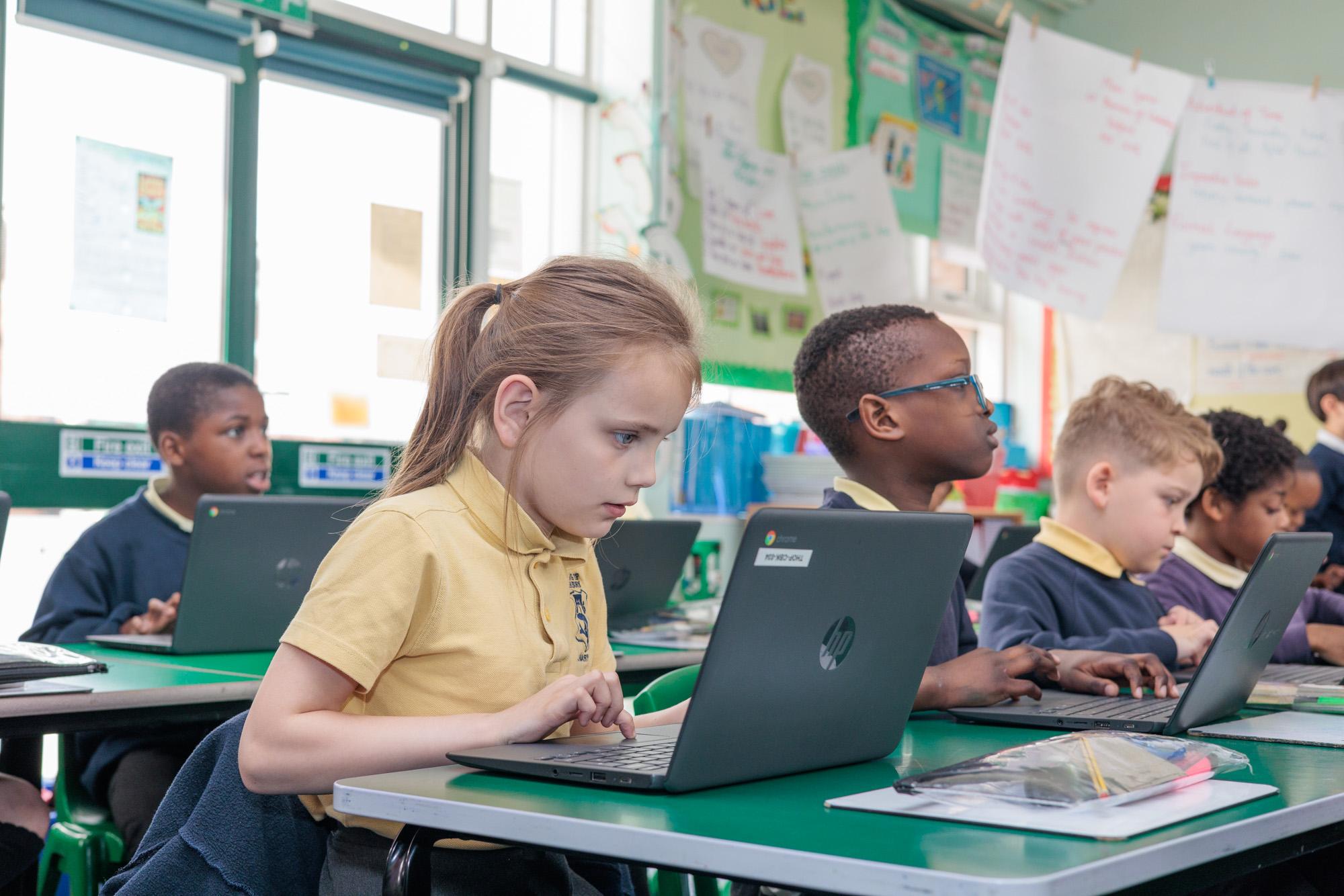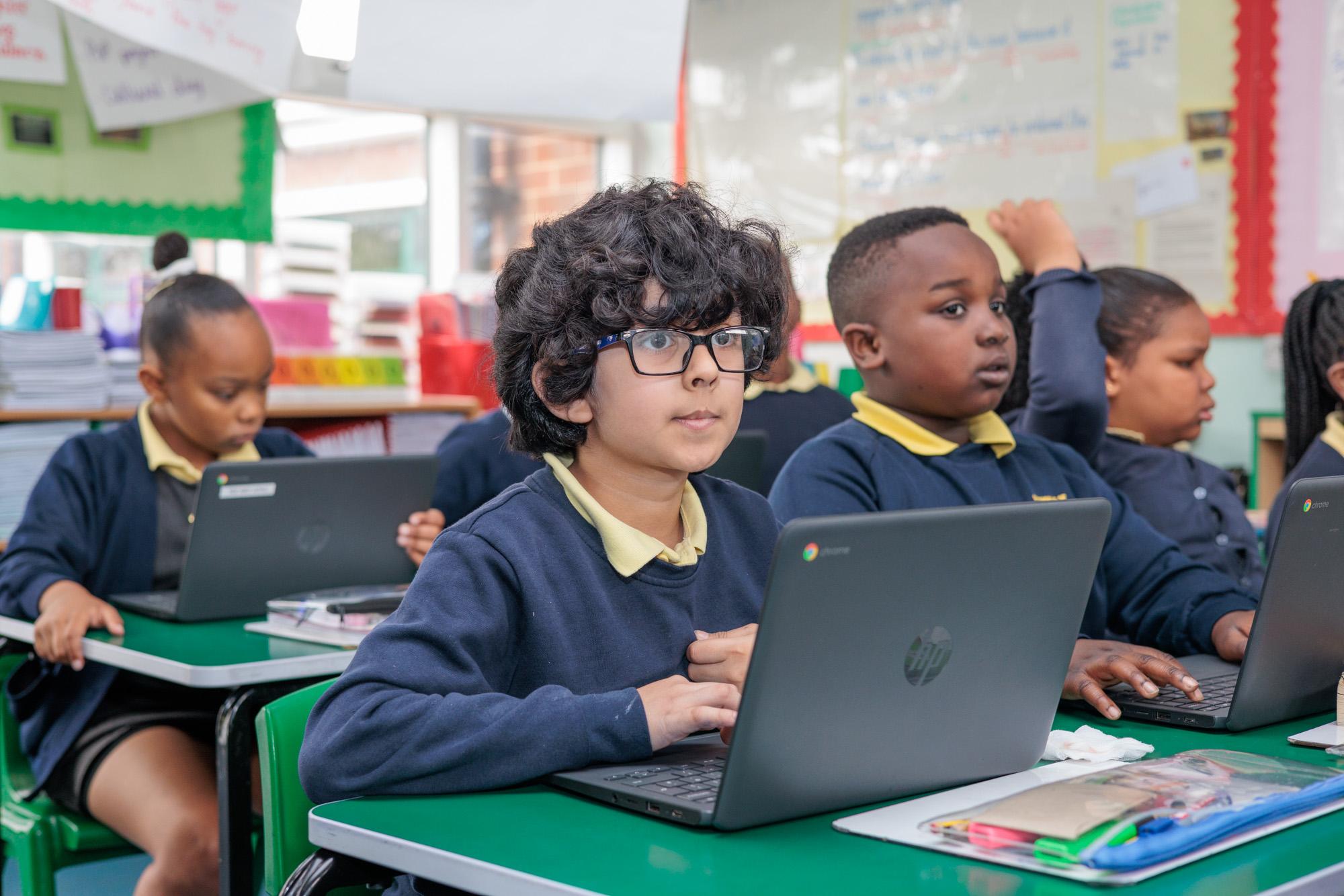Computing

“And the Lord said ‘Behold, they are one people…And nothing that they propose to do will now be impossible for them.”
Genesis 11.6

What is our school’s vision for Computing? Our vision is to support children in becoming creative, independent learners and ensure they develop a healthy relationship with technology. At our school we value and recognise the contribution that technology can make for the benefit of all pupils, staff, parents, governors and society. We strive to provide safe opportunities in computing to motivate, inspire and raise standards across the curriculum. Everyone in our school community will be equipped with the digital skills to meet developing technology with confidence, enthusiasm and prepare them for a future in an ever-changing world.
We want our children to be creators and innovators not just mere consumers of digital content. The idea of the children as digital creators is what underpins our planning and computing units. Our children are taught to understand that technology is an integral part of modern life and the key to the future is to harness and understand technology’s potential. Computing is a constantly evolving subject that involves solving complex problems, being able to collaborate with others, learn from mistakes and refine solutions.
Our computing curriculum is designed to be easy to follow, with logical sequenced steps that will equip all children with the essential skills and knowledge they need to use technology safely and creatively. It has numerous cross circular links with art, mathematics, science and design and technology. When planning we ensure that children can build on their understanding, as each new concept is taught with opportunities for children to consolidate and reapply their skills and knowledge throughout the year. Each computing unit is planned to provide new challenges and variety, to ensure we keep the child’s interest at a maximum. There is a strong emphasis on improving computing/digital vocabulary, core fundamental digital skills and computational concepts. Our computing units are organised into a series of hour long whole-class lessons, with the children working together on the same lesson content at the same time. Every unit have reflection and assessment points, this ensures that all children can process and articulate the concepts within the lesson before moving to the next activity, with no pupil left behind. The children create their own digital learning journals that record their understanding and tell their own story of the content they create. These journals and the content the children create illuminate their progression as digital storytellers, problem solvers and showcase mastery of computing.

Computing is taught by all class teachers in KS2 (Years 3-6). We have designated computing days in week 4 and 5 of each half term, equating to 6 units per year group.
Aims & Objectives
- To encourage children to develop positive attitudes to IT and to understand its importance and relevance to today’s world.
- To enable children to acquire a broad range of computing capabilities and to be confident about using a range of hardware and software including apple.
- To enable children to develop computing as a tool for learning and investigation in all subject areas.
- To use IT to encourage children to work co-operatively, taking responsibility collectively.
- To use IT to develop independent ways of working which encourage children to take responsibility for their own actions.
- To set computing tasks which require flexibility of mind and open mindedness in problem solving.
- To provide a balanced range of progressively more difficult tasks which will develop children’s understanding in communicating and handling information, controlling, modelling and monitoring.
- To instruct children in the use of a variety of IT equipment.
- To ensure a balance of computing activities are carried out in a range of contexts.
- To provide opportunities for children to explore the use of technology.
- To set aside time for discussion of children’s experience of using IT, both in and out of the classroom

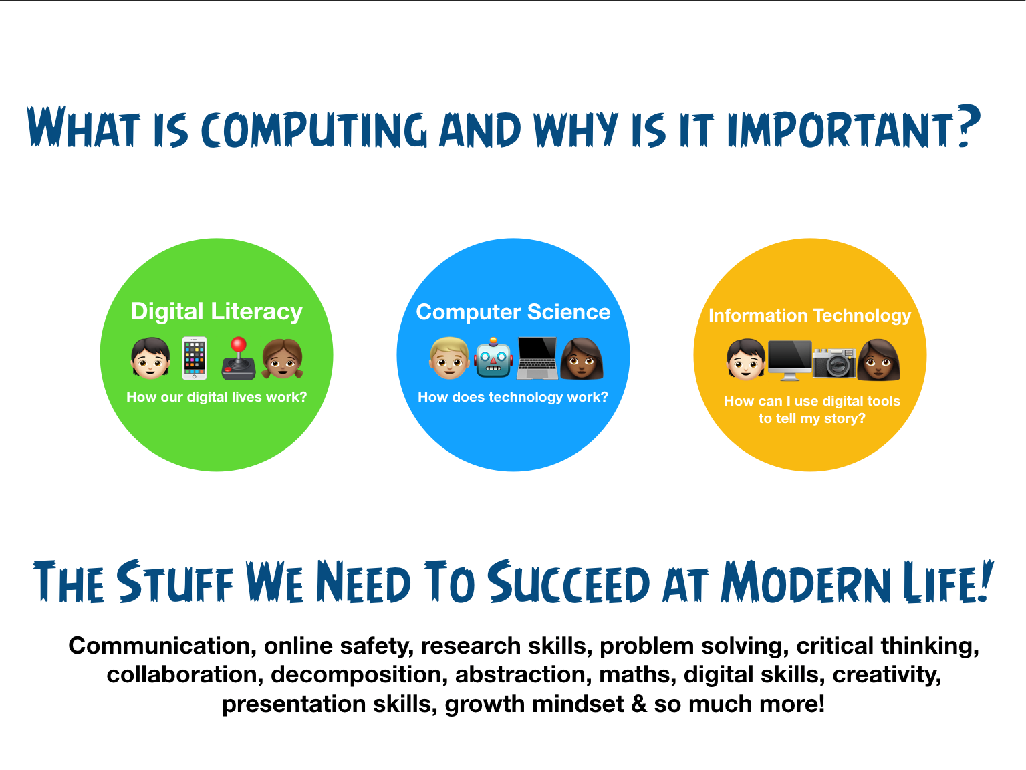
Our Computing units and progression model is broken down into four strands that make up our computing curriculum. These are Essential Skills, Computer Science, Information Technology and Digital Literacy.
- Essential Skills: ensure the children have the core basic skills to use multiple devices, this is designed to promote independence.
- Computer Science: underlines the knowledge and skills relating to computational thinking, coding, algorithms and networks.
- Information Technology: underlines the knowledge and skills relating to digital communication, creating multimedia content and data representation/handling.
- Digital Literacy: underlines the knowledge and skills relating to online safety and technology in society.

Reading
The children access a wide variety of content online which they must decode and digest using reading skills taught in school. When producing content, they must proofread, spellcheck and consider the purpose and audience. Children will develop subject-specific vocabulary and comprehension skills, for example when coding and creating algorithms (instructions).
Inclusion
Our computing curriculum is designed to meet the needs and requirements of all our pupils who have particular needs. We are committed to the inclusion of all children in our student community, and content is adapted so that everyone develops the skills to become an effective learner in computing, developing logic, problem-solving and basic skills to name a few.
Character development
The Computing scheme of work is highly ambitious and challenging in order to develop our students’ character. Learners are expected to be resilient, active participants in creating, not just consuming, content.


We are aware that children in Early Years are engaging with electronic devices that can connect to the internet and that many children are going online from a young age. Therefore we ensure that all of our pupils are taught about online safety.
Please take a look at some of the parent resources below if you would like to discuss online safety with your child at home:


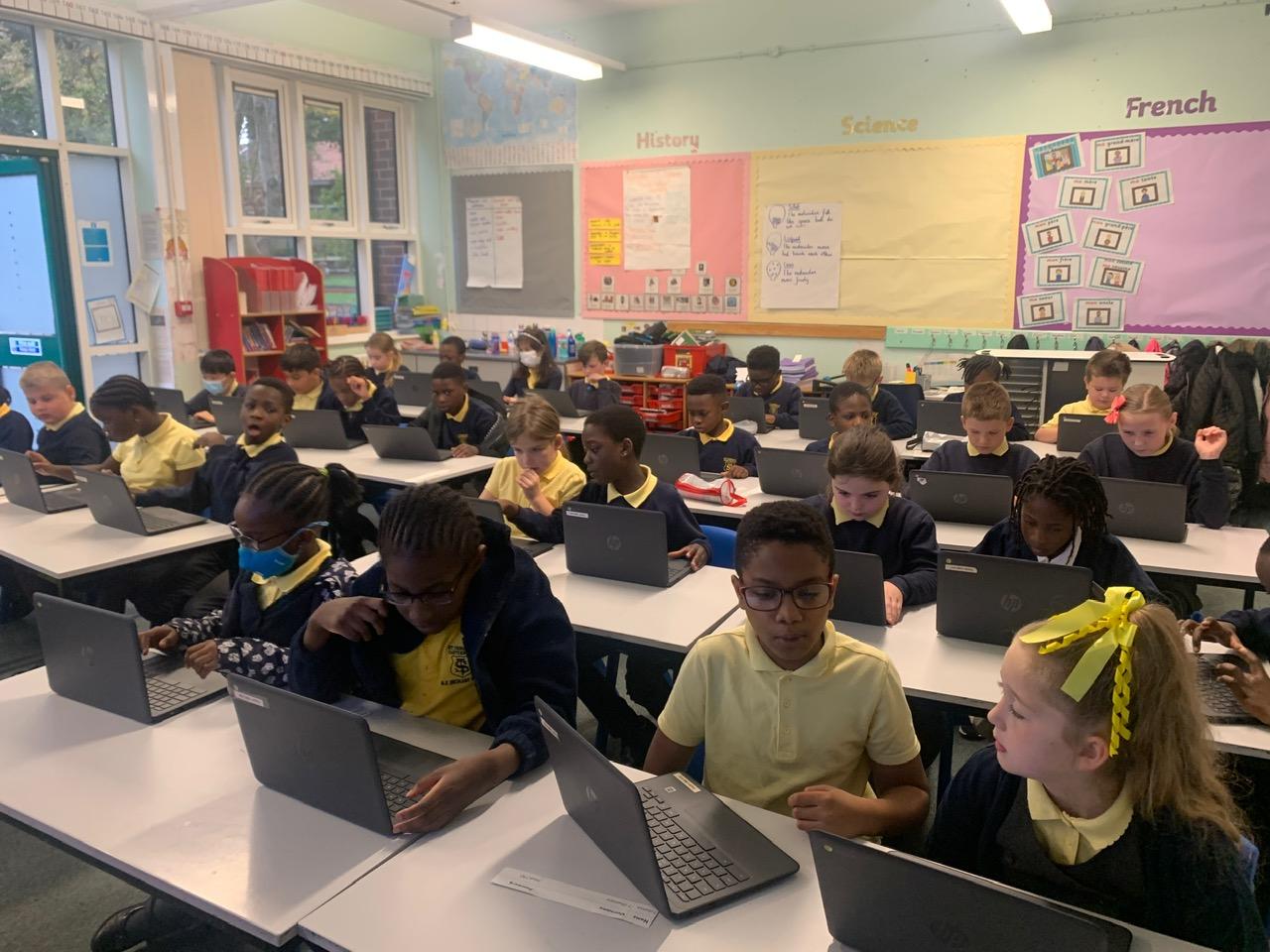

The children at our school have access to a wide variety of resources that enable them to continue the learning of Computing at home. For example; Google Classroom and G-Suite, Hour of Code and Scratch accounts. Through these the children are able to complete set tasks and save their work virtually so that it can be shared both in school and at home with teachers and parents


